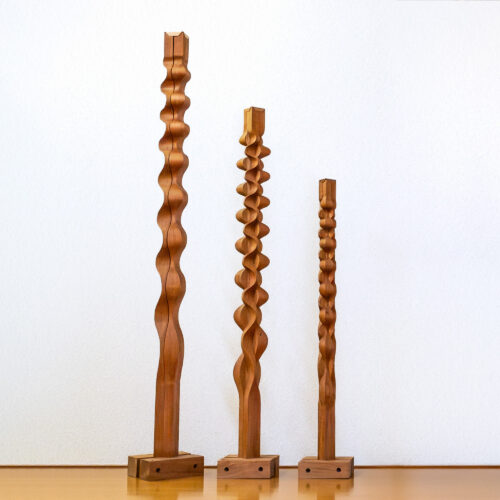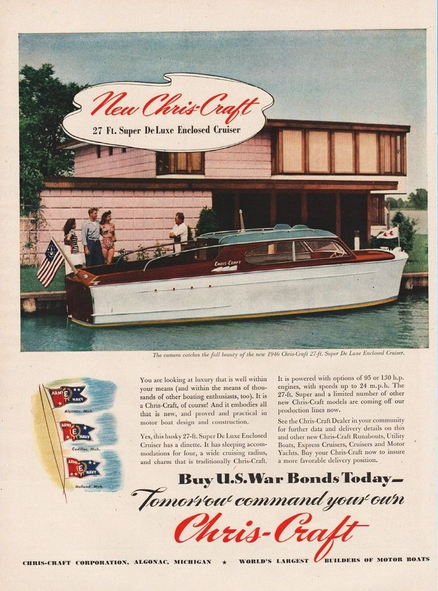LeRoy Smith and his family lived in Highland Park, Michigan, but owned land along the St. Clair River near Algonac for summer trips. In the late 1930’s, they decided to build a summer house on the property to take advantage of the river view. Mr. Smith wrote to Alden B. Dow in early 1940, inviting the architect “to build me one of the most attractive small houses on the river.”
Construction began on the house in December 1940 but was not finished until early 1942 due to contractor-related difficulties. The Smith residence is a two-story, flat-roofed house constructed of 12 inch square unit blocks. A long, low three-car garage extends at a right angle from the corner of the house. The street side of the house has a plain flat façade with a few small windows, giving it a box-like appearance. In contrast, the river side contains a large expanse of windows opening onto the water underneath wide projecting eaves.
On the interior, the first floor has low ceilings and walls of windows overlooking the river. It contains the dining room, kitchen, maid’s room, bathroom and playroom. A large screened porch is just steps away from the canal. An open central stairway leads up to the living room, which has a higher ceiling than on the first floor and banks of windows on two sides. Two bedrooms and another bathroom are also on the upper level.
Many of Mr. Dow’s signature design elements are present in the house, including the use of edge-grain fir for interior trim; extensive built-in cupboards, shelves and mirrors; and large windows that blur the distinction between outside and inside. With its geometric character and boldness, the home was striking and modern, but met the needs of the owners for easy and gracious living close to the water. In fact, the house would often be used as the background in magazine ads for the iconic power boats built by Chris-Craft, which also was located in Algonac.
The LeRoy Smith Residence was added to the National Register of Historic Places in 1996.



















